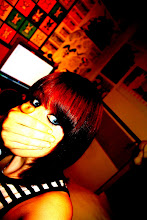History, Background and Policy
- The BBFC was established in 1912
- It is an independent company funded by fees they charge – not by the Government.
Legislations
The obscene publications act 1959 & 1964- Cinematograph films ( animals act) 1937
- Protection of children act 1978
- Race relations act 1976
Human rights act 1998
In 1975 the board cut 30% of all films submitted – mostly in the ‘X’ category.
By 1985 this was dropped to 18%.
By 1995 only 6.6% were cut, all ‘cuts for category’ 12, 12A and PG (this means content was cut to lower the category so that a wider audience could view the film).
By 2005 only 1.1% was cut.
In 2008 the BBFC classified:-
- 639 films. 405 were either 12A or 15.
- 1149 videos and DVDs. 2613 in the 12 category.
- 2237 trailers and ads. 1258 for cinema release.
- In 2008 the BBFC rejected only 2 works, 1 being Manhunt 2 (original version) due to extreme sadism.
Aspects taken into consideration:-
- Story
- Style
- Audience
- Moral Framework
- Artistic or educational merit
- Precedent
- Possible Harm
- Potential level of offensiveness
- Context => language within context e.g. swearwords can keep film at a 12A whereas extensive use or violent use pushes up the certificate.
Of the material that Examiners have to view, these questions need to be asked:
Is the material in conflict with the law?
Is the material, at the age group concerned, likely to be harmful?
Is the material, at the age group concerned, clearly unacceptable to broad public opinion?
Classifications
Violence
U – Mild reference only
PG – Moderate violence without detail
12 – Violence must not be dwelled on therefore should be no emphasis on injury or pain
15 – Violence may be strong but may not dwell
Horror
U – Should be mild and brief with a reassuring outcome
PG – Frightening sequences should not be prolonged or intense
12 – Sustained moderate threat and menace is allowed with only occasional gory moments
15 – Strong threat and menace are permitted but the strongest gory images are unlikely to be acceptable
Sex
U – Mild behaviour (kissing) and references (“making love”) only
PG – sexual activity may be implied but must be discreet
12 – May be implied but references should not go beyond what is suitable for adolescents
15 – Sexual activity can be shown but without strong detail but there may be strong verbal references
Language
U – Infrequent use of very mild language only
PG – Mild bad language only
12 – Strong language must be infrequent
15 – There may be frequent strong language but the strongest terms are only acceptable where justified (by context) aggressive use of the strongest language is unlikely to be acceptable
Imitable Techniques/Behaviour
U – No emphasis on realistic or easily accessible weapons, no potentially dangerous behaviour youngsters may copy
PG – No glamorisation of realistic or easily accessible weapons
12 – Dangerous techniques should not dwell on imitable detail or appear harm free, no glamorisation of easily accessible weapons
15 – No imitable detail
Theme Offence
The acceptability of a theme depends on its context and sensitivity of presentation. The most problematic themes i.e. racism are unlikely to be appropriate at the most junior levels of classification.
Adverts/Public Information Films
Classification decisions may be more restrictive with regard to trailers and advertisements. This is because difficult content in such short works may have a greater impact on an unprepared audience.
From looking around the BBFC's student website under a report on the 2005 classification guidelines i found this interesting information
Percentages of people who think the BBFC Guidelines are ‘about right’:
Sex – 58 per cent
- Violence – 53 per cent
- Language – 51 per cent
- Drugs – 54 per cent
